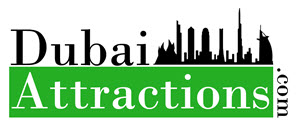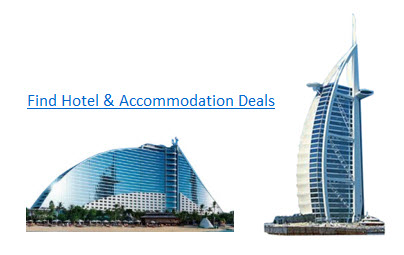|
|
|
|

Dream & Believe - The Future Of Dubai

|
|
Exploring Dubai's Attractions - Seeing Dubai's Future
• Tours & Sightseeing
• Shopping In Dubai
• Adventure
• Sports
• Amusement & Theme Parks
• Landmarks
• Spas & Wellbeing - Walking
• Beaches & Beachlife
• Cultural - Historic
• Wildlife Attractions
• Dining Out
• Nightlife
• Outdoor
• Museums
• Parks
• Art Galleries
• Dubai For Kids
• Dubai From The Air
• Shopping In Dubai
• Adventure
• Sports
• Amusement & Theme Parks
• Landmarks
• Spas & Wellbeing - Walking
• Beaches & Beachlife
• Cultural - Historic
• Wildlife Attractions
• Dining Out
• Nightlife
• Outdoor
• Museums
• Parks
• Art Galleries
• Dubai For Kids
• Dubai From The Air
|
|
Dubai Attractions
Exploring the golden future of the Emirate of Dubai

In The Beginning - Desert & Oil
In the early 1990s the government of Dubai decided to diversify its economy from making money in oil to one of major construction that would bring in tourists, business and sustainable turnover to the sheikdom of the United Arab Emirates; after all, the oil fields that were to keep this country in its then glory days, were destined to run dry.
With the oil fields running dry in in the near future, it was time to make some important decisions; decisions that would turn the country from an oil-based economy to one of development, development and more development. Something spectacular was needed to ensure the future of Dubai was one which guaranteed its prosperity, both as a city and a nation of people.
It was decided that Dubai was perfectly positioned to become the main hub of tourism in the world - one look at some of the many hotels, marinas, plush apartment blocks, shopping malls, resorts and other key structures and you will instantly see why this is the land of the future, a place of opportunity and a landscape that would not have looked out of place on the cover of a sixties science-fiction novel.
The property boom took years of planning before the first crane was bought in to turn the coastal town into a thriving international city with bright lights, state-of-the-art buildings and an economy to match. The property boom began in earnest around 2004 and there were so many cranes operating in the city that 30 percent of all the cranes in the world were spinning and lifting right here in Dubai.
Development began in earnest, impressive plans were laid to expand the number of tourist attractions, and the Dubai we know today really began to take form.
It All Goes Wrong - And Then Right Again
The global economic downturn of 2008 put a hefty dent in Dubai’s property building boom, with the Emirate being one of the most financially affected places on the planet. Aside from the impact on property prices and the abandonment of many projects, the global financial crisis prevented travel and disrupted holiday plans for many in the world.
However, Dubai rode this wave and continued to prosper partly because of its no tax policy and economic free zones. The eventual rebound was a strong one. The Emirate has never lacked ambition when it comes to development and in its preparation for the World Expo 2020 event - one which truly will show the world that Dubai's future is a strong one - it has planned to unveil a truly remarkable Expo 1,000+ acre site consisting of:
• Three huge pavilions symbolising mobility, sustainability and opportunity
• Innovations pod and best-practice arenas in all three pavilions
• All areas to be linked by walkways
This is just the tip of the iceberg. The 2020 World Expo will be a true showcase for innovation in so many forms that it's difficult to imagine this far in advance. It's held once every five years and with Milan in Italy holding the 2015 event, Dubai is well positioned to with plenty of time to ready itself for the big show.
As far as world events go, few come much bigger than The Expo. In fact only the Olympics and the soccer World Cup are bigger stages and the Expo has never been held in the Middle East before. It all stated off in London in 1851 when the Great Exhibition (as it was called back then), held a series of events in the city to tighten the relationships between all the different cultures around the world. It was designed then, as it is today, to celebrate cultural diversity and pay homage to global development and the advancement of mankind.
The UAE is expecting around 25 million visitors during the Expo event, so the international airports in Dubai, the cross-city transport systems, and the accommodation infrastructure have to be ready to cope. All have been subject to impressive development announcements since the Expo win. They'll need to be ready for the influx of those 25 million visitors in 2020, and the Dubai authorities have employed the world’s best project managers and business leaders to oversee the preparation and operations.
Plus of course it's not just transport, accommodation, and airports that need to grow. Every element of city life that you can imagine is seeing plans for development. Smart facilities, theme parks, shopping, restaurants, and attractions offering every form of entertainment are on the list too. In fact, there is so much going on that it's not easy to keep fully up to date with Dubai's development plans.
Gauging The Future - An Appreciation Of The Past
If we begin to look at the future of Dubai and where this amazing city is heading, we need to assess its history and understand what was here in the past.
In the 18th century Dubai was nothing more than a pearl fishing village with much of its trade being done with India and Iran. By 1960 Dubai had grown into a small town with 20,000 residents, but it wasn’t until 1966 that oil was discovered beneath the sand dunes and desert shrubs.
Suddenly, with the discovery of oil and an ever-increasing global demand for the so-called “black gold” Dubai was to get wealthy, and very quickly too. On the boom that the oil industry brought into Dubai, the town became a city with schools, hospitals and much-improved road and air transport systems.
Today Dubai has grown into a huge metropolis with more than a million inhabitants, with a property and development boom that has seen the lion’s share of revenue now come from many different forms of tourism and business. In fact oil now accounts for just 3 percent of the nation’s wealth. It can safely be said that the UAE no longer relies on the black stuff to fund its economy.
Beyond 2020 - Can The Growth Be Sustained?
When the crowds have left and Dubai prepares to move forward in 2020, what sort of future can this vibrant city expect to hold. Can it sustain this momentous development without tripping itself up?
There are some dangers, but if recent history has taught us anything it's that the leaders of the Emirate will already be thinking that far ahead.
Firstly we need to look at any key environmental issues that might impact on Dubai’s rapid growth. Can the architects of the world who have been commissioned to design Dubai's future think outside the box and consider the environment? They'll surely need to be targeting solutions to three key areas in energy efficiency, development cost reduction, and making the most of resources where there are likely to be limitations.
Sustainability is a key theme that lies behind all the future plans of the emirate.
Environment Impacts
We've seen throughout the world that development on any scale can have huge impacts on the environment. Forests, animal habitats, and coral reefs to mention just a few of the earth's resources that have been lost to various degrees in different parts of the world.
Dubai will need to plan carefully.
Building those islands that represent the world involved an awful lot of dredging, and although new diving sites will be born out of the shells and sand that was shifted just to make these islands, thousands of coral outcrops will have disappeared forever. The currents that carry developing fish in the Gulf waters have been changed beyond repair. The ecosystem in the Gulf will have been radically altered.
And what about Dubai’s notorious excessive summer heat?
All these hotels, new residential properties, luxury condos, holiday resorts, shopping malls, and holiday centres are going to need air conditioning to protect from the excessively high temperatures which penetrate the atmosphere here in June, July and August in particular. The carbon footprint of your typical Dubai resident is a heavy one and twice as bad as any footprint in any major western city.
Dubai’s architects have already shown that they can be innovative enough to design some very clever buildings. It will not be beyond these architects to build a skyscraper powered by wind turbines. With each floor changing the way it faces, the building will look different each time you view it. So there are at least one or two design awards pending for the building developments of the future.
But what about Dubai’s future, say beyond 2030, what will happen if this city continues to use cheap sustainable energy from fossil fuels to power its hunger for water. Dubai may not look like a desert now but it still has the desert climate. It still has hot, dry weather which needs more water than ever to keep its visitors and residents cool. It takes an awful lot of energy to desalinize the water so it can cater to the needs of the thousands of tourists at the many holiday resorts; it takes oil to help run the desalinization plants to help its implanted tropical landscapes placed in the middle of what was a desert.
There is concern over the volume of traffic building up on Dubai’s roads. If you drive around this huge city you’ll notice how wide some of the roads are, but despite these efforts traffic congestion is becoming a serious problem.
Global warming is a major concern for the entire planet and where Dubai makes some effort to keep it green, other nations like China and the Philippines are burning fossil fuels and contributing to a planet that is getting warmer. If the polar ice caps start to melt (and they already have started to) sea levels across the world will rise by around 10 or 12 inches in our children’s lifetime.
What does this mean for Dubai’s low-lying world islands and other resorts that have been reclaimed from the sea? They will surely be liable to flood which would not do much to the property values in the long term.
The Human Element
Much of Dubai’s construction boom has been overseen by labourers migrating from Asia. Workers travel from Bangladesh, India, Pakistan, Nepal and the Philippines to labour and work long hours, often for a wage that might be of value in their own home country but not for Dubai’s prices. Often the workforce will only stay here for six months or a year as the conditions can be stressful and depressing.
The construction workforce will have often been forced to pay an agent in their home country to find them work in Dubai. This payment has to be made up front but so many workers are forced to find a bank that will loan them the money and repeatedly face denials and refusals as their credit rating is so low. This means workers often turn to loan sharks with huge interest rates and debt problems.
When the construction boom begins to die down (as it inevitably must sometime soon) this human issue should diminish.
Global Positioning - The Centre Of The World?
Dubai’s geographical location is perfect for supporting its intention to become a global tourism and business hub. Both for Muslim and non Muslim visitors. All of the developments of recent years - and those planned for the future - are intended to support that target.
From a business perspective, Dubai’s vision of the future is to make a knowledge-based economy with the Jebel Ali Free Trade Zone performing a welcoming role to foreign investors and businesses. Here, a foreign company can make profit and keep all of that profit for itself. This is because Jebel Ali is a free trade zone and a place where no tax is required to be paid to the government. If that’s not enough to encourage overseas investment, the government of the UAE has announced a series of pro-business laws and regulations which will make it easier for a business to thrive here.
On the tourism front, we've already read about the enhancements in air and cross-Dubai travel, the growth in accommodation, and the development of new tourist attractions. With its cross-roads position, within straightforward reach of about two thirds of the world's population, and the development of different forms of tourism under way (medical, cultural, vacation, halal, etc), the tourism related growth of the Emirate seems well assured.
In the Muslim world where Dubai is very much an obvious logistical centre, much focus is on Halal and Sharia compliant culture and accommodation. The emirate is working on meeting requirements in those two areas. With Halal in particular worth an estimated $125 billion in coming years, they're certainly good areas to receive intense focus.
Driving Development - Key Figures
Among some of the key players in driving and promoting tourism and development are His Excellency Helal Saeed Almarri, Director General and head of the Department of Tourism and Commerce Marketing (DTCM), who recently proposed a plan to make tourism the number one economic driver in the UAE. His department has also completed analysis which will outline a plan to cater for the vast number of tourists and business visitors it expects over the next seven years.
Dubai’s Department of Tourism and Commerce Marketing has outlined the seven-year “Tourism Vision” to 85 of the UAE’s top hospitality and travel industry decision makers, as it looks to increase its strength between the government and the private industry sector to increase visitor numbers.
Another key player in driving a smooth transition to handling the vast amount of visitor numbers into Dubai is Romaine Hericher, who is a multicultural manager with a sound knowledge of the travel industry. His team are pivotal in making sure the airports offer a smooth and easy path for the millions of visitors.
But the real key players in the future of Dubai are its people. A friendly and welcoming population will quickly spread word around the world among the traveling community. Tourists in particular will often judge a place on the friendliness of its citizens, as well as a number of other key sectors.
The video below is a perfectly crafted one which takes us on a visual journey of Dubai's future.
When you first arrive at either of Dubai's International Airports the first thing you'll notice is the sheer scale and size. But however overwhelming that impression might be on first arrival, it’s a case of, “you haven’t seen anything yet.” Those five words are likely to come to mind plenty of times once you've left the confines of the airports too.
The reason why the facilities for air travel are expanding to such prolific levels is to accommodate the millions of passengers that will enter through the country and arrive in the emirate to do business, leisure, pleasure or a combination of the whole lot. In other words, millions of travellers arriving to experience that ''you haven't seen anything yet'' feeling.
But just why has Dubai decided to embark on a construction boom to rival any project set out before, anywhere in the world?
The reason why the facilities for air travel are expanding to such prolific levels is to accommodate the millions of passengers that will enter through the country and arrive in the emirate to do business, leisure, pleasure or a combination of the whole lot. In other words, millions of travellers arriving to experience that ''you haven't seen anything yet'' feeling.
But just why has Dubai decided to embark on a construction boom to rival any project set out before, anywhere in the world?


